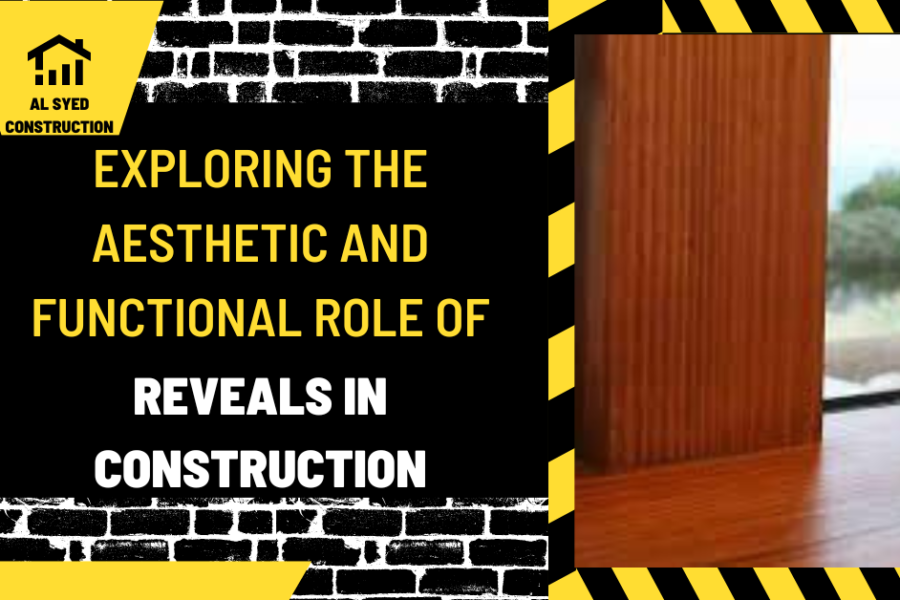Exploring the Aesthetic and Functional Role of Reveals in Construction
Table of Contents
Introduction
In the world of construction and architecture, the term “reveal” is often used to describe a specific design element that adds depth and visual interest to a structure. This article delves into the concept of reveals in construction, examining their purpose, types, and the impact they have on both the aesthetic appeal and functionality of buildings.
Understanding Reveals in Construction
Definition
A reveal is a design feature that creates a visible line or gap between two surfaces, typically in walls, ceilings, doors, or window frames. It is a deliberate indentation or projection that adds depth and definition to architectural elements.
Purpose
- Aesthetic Appeal: Reveals add visual interest and architectural detail, enhancing the overall appearance of a building.
- Functionality: In some cases, reveals are used to conceal expansion joints, wiring, or other functional elements, integrating them seamlessly into the design.
Types of Reveals in Construction
Wall Reveals
- These are grooves or indentations in walls that create shadow lines and add texture to flat surfaces.
Ceiling Reveals
- Similar to wall reveals, ceiling reveals provide depth and visual interest to ceilings, often used in conjunction with dropped or suspended ceilings.
Door and Window Reveals
- The gap between the frame of a door or window and the surrounding wall is known as a reveal, which can be accentuated for aesthetic purposes.
Expansion Joint Reveals
- These are used to accommodate the expansion and contraction of building materials, preventing cracks and structural damage.
Incorporating Reveals in Architectural Design
Material Selection
- The choice of materials for reveals is crucial, as it impacts both the appearance and durability of the feature. Common materials include metal, wood, and plaster.
Lighting
- Strategic lighting can enhance the effect of reveals, creating dramatic shadows and highlights that emphasize the architectural details.
Color and Texture
- The color and texture of reveals can be contrasted with surrounding surfaces to create a striking visual impact.
The Impact of Reveals on Construction and Aesthetics
Enhanced Visual Interest
- Reveals add a layer of sophistication and detail to otherwise plain surfaces, elevating the architectural design.
Concealment of Functional Elements
- By incorporating reveals into the design, functional elements like expansion joints and wiring can be hidden, resulting in a cleaner and more cohesive appearance.
Flexibility in Design
- Reveals offer architects and designers the flexibility to experiment with different lines, depths, and patterns, allowing for creative expression in construction.
Conclusion
Reveals are a subtle yet powerful design element in construction that can significantly impact the aesthetic and functional aspects of a building. By understanding the different types of reveals and their applications, architects and builders can create spaces that are not only visually appealing but also structurally sound and practical.
FAQs
- Are reveals only used for aesthetic purposes?
- While reveals are often used for aesthetic purposes, they can also serve functional roles, such as concealing expansion joints or wiring.
- Can reveals be added to existing structures?
- Yes, reveals can be added to existing structures during renovations or refurbishments to enhance their appearance or functionality.
- How are reveals constructed?
- Reveals are typically constructed by creating a groove or indentation in the surface material or by installing a separate piece of material to create a gap or projection.
- Do reveals require special maintenance?
- Reveals may require some maintenance, especially if they are used to conceal expansion joints or if they are exposed to weather elements. Regular inspections and cleaning can help maintain their appearance and functionality.
- Can reveals be used in both interior and exterior design?
- Yes, reveals can be used in both interior and exterior design, adding depth and detail to walls, ceilings, doors, and window frames in various settings.




